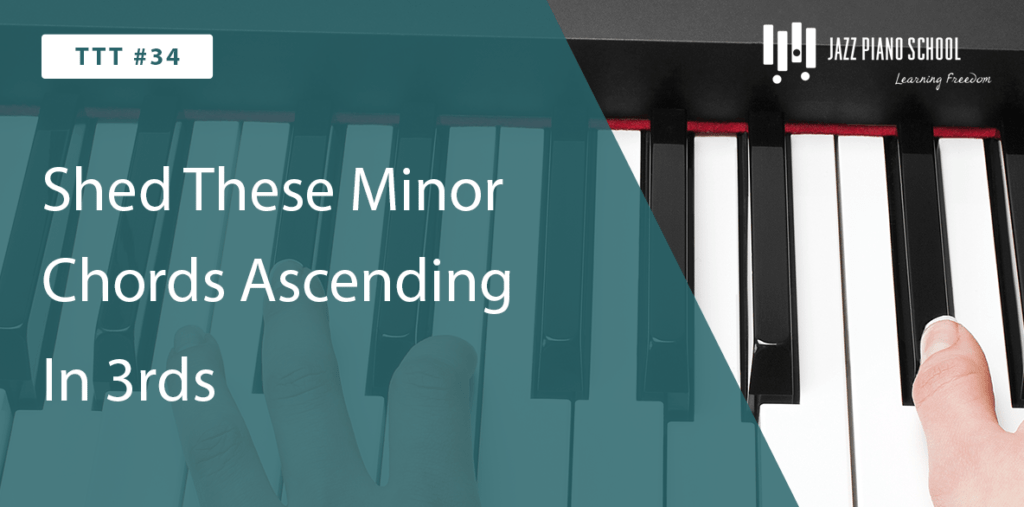- Don’t use pentatonics exclusively – This gets old fast. Pentatonics work best when they are mixed in with other harmonic language and textures. By combining pentatonics with chord-scale relationships, you can create countless paths to navigate changes.

- Start inside, take it out, then bring it back in – Pentatonics create tension. For this tension to be the most effective, it must be both set up and resolved. In the same way that melodies can be phrased by dynamics/touch to create an arc, so can harmonic activity. Think about the basic plot of any story when shaping pentatonic-featured lines

- Use pentatonics in sequences – Especially when using more outside pentatonics (those with the least common chord tones in relation to the sonority they are being played over), they can be supported more effectively by using repeated melodic patterns. For example, let’s look at a 1-2-3-5 sequence. Here’s one way it could look.

- Experiment with pentatonics ½ step above and below the basic tonality – For example, if you are playing over a G dominant 7 chord, try using a Gb pentatonic. This is the most “outside” pentatonic you can play over this sonority. It shares no chord tones with the G mixolydian scale.
Here is the continuum of inside to outside pentatonic scales

This information has been derived from “Pentatonic Scales for Jazz Improvisation” by Ramon Ricker















9 Responses
It,s very good.I like it.
Thank you.
Unfortunately over my head. I am still trying to learn what a pentatonic scale is. I can’t find much info on it. All sights assume you know what it is.
I do appreciate all your tutorials.
There are a thousand videos in YouTube that lay out exactly what a pentatonic scale is.
Minor pentatonic:
1 b3 4 5 b7
C Eb F G Bb
Major pentatonic:
1 2 3 5 6
C D E G A
Obviously this is the Major Pentatonic. Scale. What pentatonic scale does one play over dominant chords? The Major pentatonic scale, omitting the b7? Replacing the 6 with the b7? Or NOT using the pentatonic scale, but rather the Lydian scale? Thanks
Sorry. I meant the Mixolydian scale….
Pentatonic scales are five note scales, and are common in much ethnic music. I find that three basic scales are a great start. Major pentatonic – 1 2 3 4 6 (in C major, C D E G A); Minor Pentatonic – 1 b3 4 5 b7 (in C minor, C Eb F G Bb); and what I call a Dominant Pentatonic – 1 2 3 5 b7 (in C dominant – C D E G Bb); The last can also be used as a Minor 6 Pentatonic – 1 b3 4 5 6 (in C minor – C Eb F G A) Hope that helps!
Pentatonic scales have 5 notes; hence the name PENTatonic. The two most common pentatonic scales, which are relative and are comprised of the same notes in any key, are major and minor.
The major pentatonic scale is comprised of the scale degrees: 1, 2, 3, 5, and 6.
C major pentatonic, e.g., contains the following notes: C, D, E, G, and A.
The minor pentatonic scale contains these scale degrees: 1, b3, 4, 5, and b7.
Note that C major is relative to A minor…
…and that A minor pentatonic has these notes: A, C, D, E, and G, which are the same notes comprising C major pentatonic.
This is very helpful
The pentatonic scale is the first three notes, the fifth note, and the sixth note of a major scale. In the key of C, the pentatonic scale would be C, D, E, G, and A.